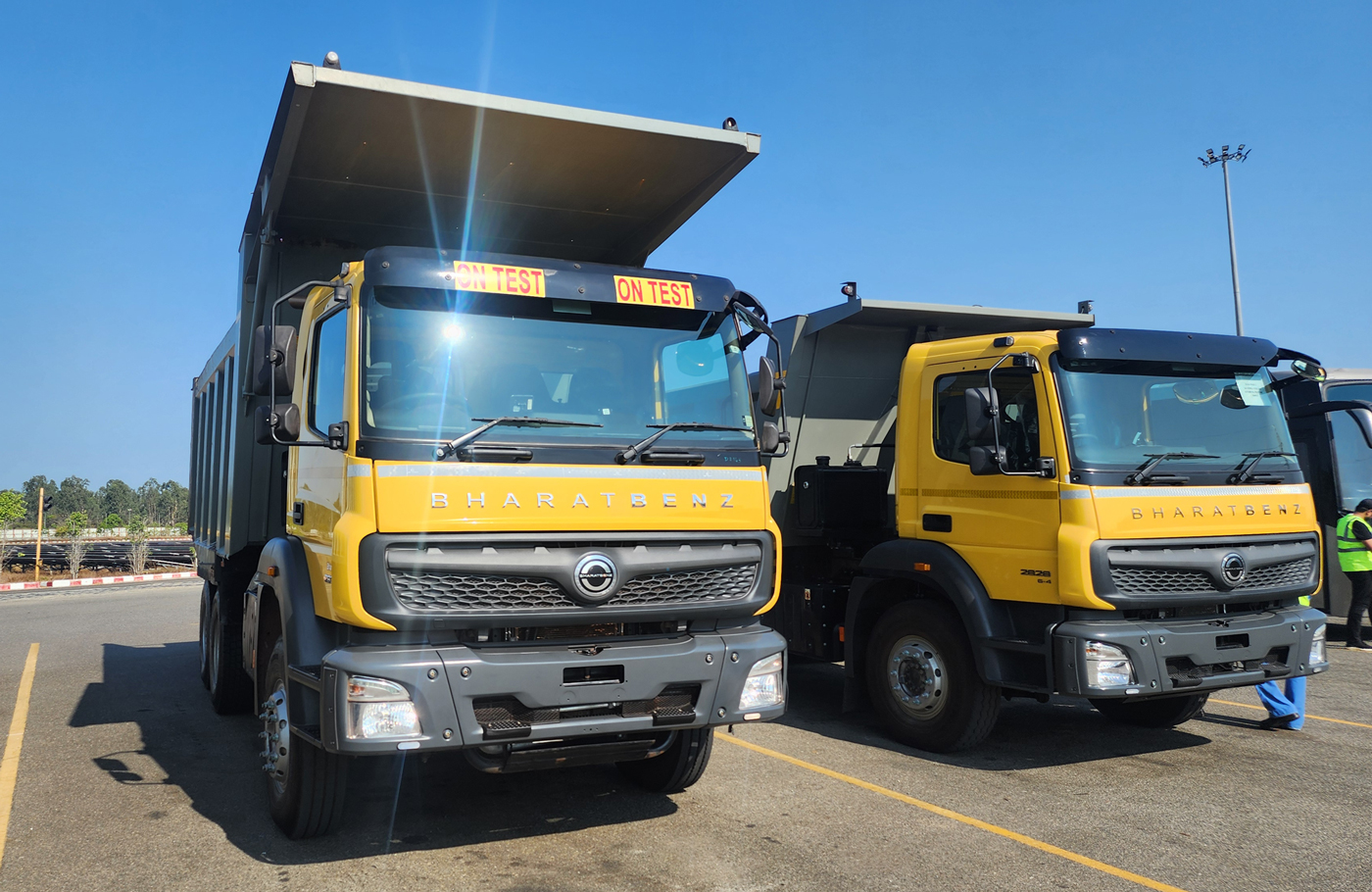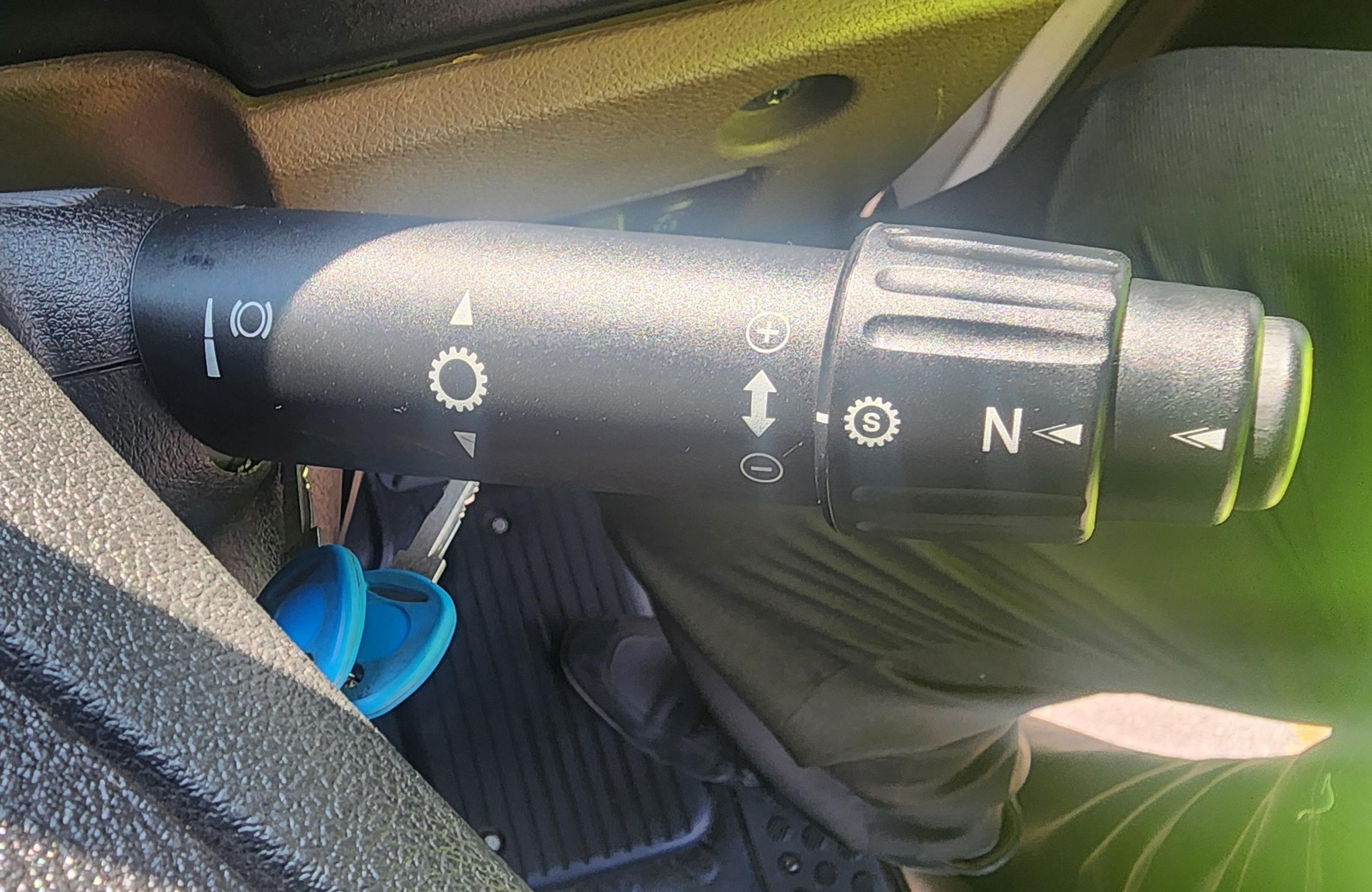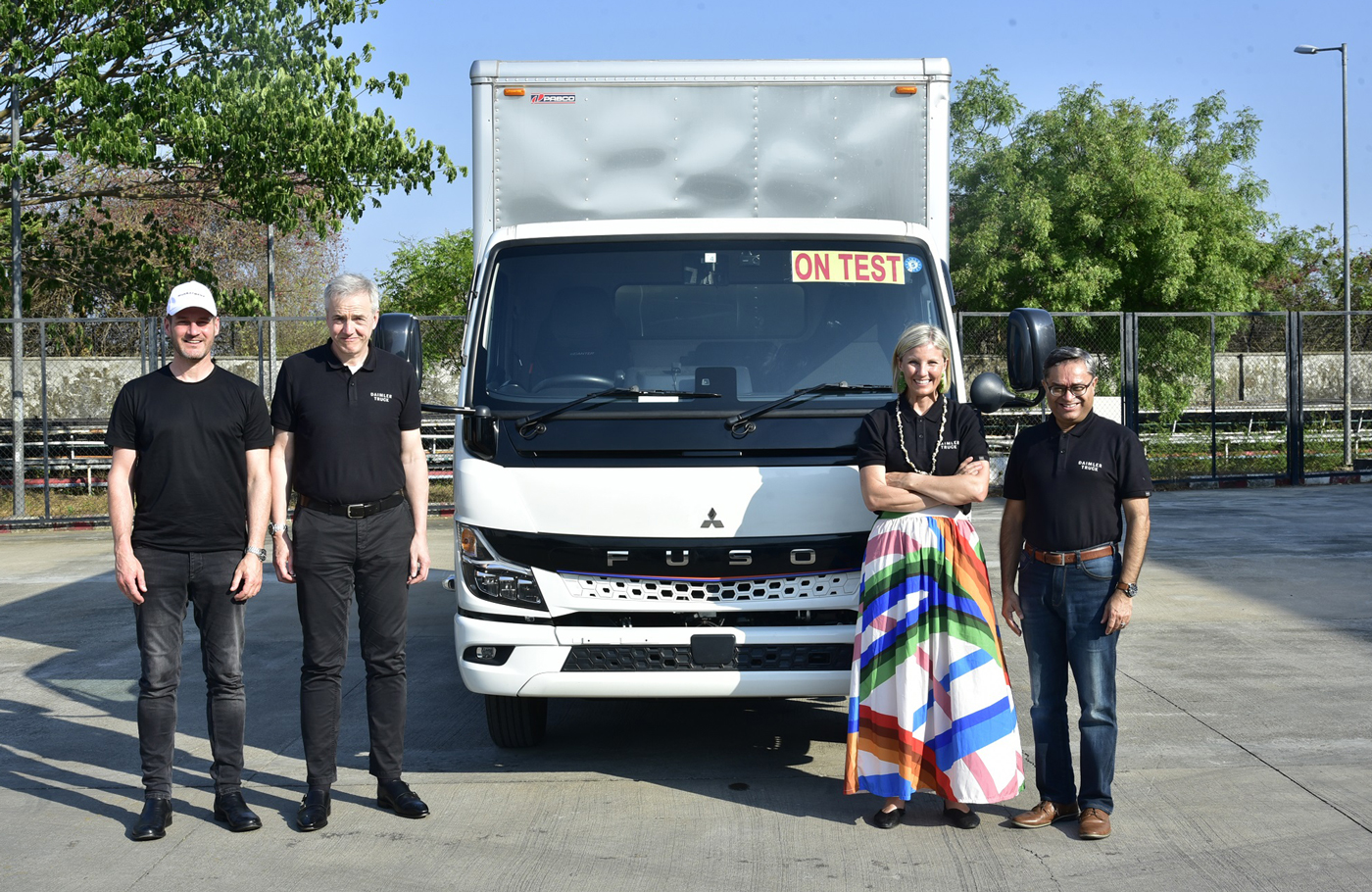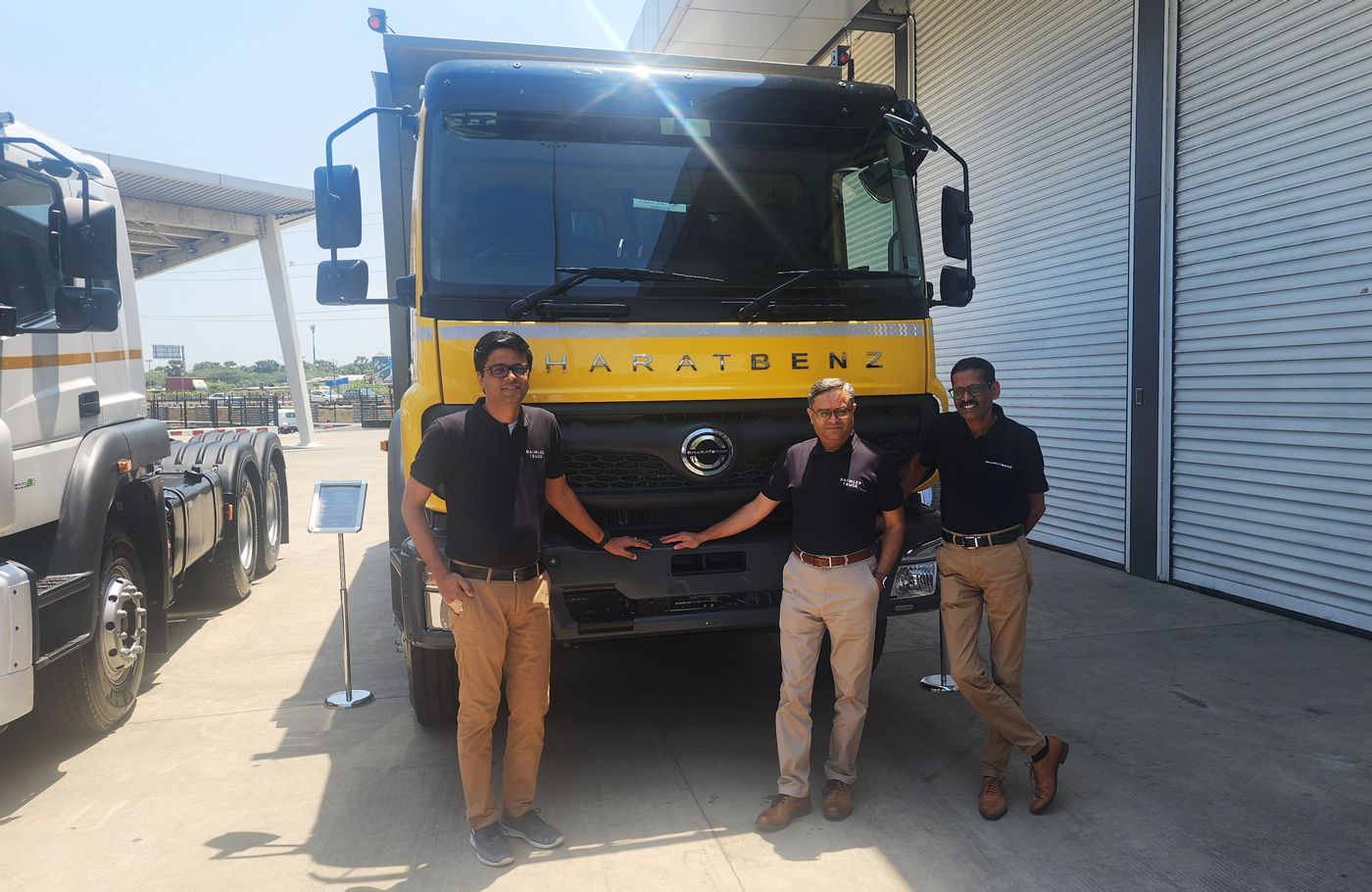Daimler: surging sales and launches aplenty in India
Daimler: surging sales and launches aplenty in India
The Indian commercial vehicle market is one of the largest in the world. According to Statista, 850,600 sales are expected this year. BHUSHAN MHAPRALKAR, editor of Motoring Trends, gives us a unique insight into Daimler’s plans in this vibrant market.
Daimler India Commercial Vehicles (DICV), the Indian subsidiary of Daimler Trucks, achieved record sales and revenue performance in 2023. Good demand for its trucks and buses ensured that the Chennai-based commercial vehicle (CV) manufacturer recorded sales growth to the tune of 39% over the previous calendar year.
Witnessing the doubling of bus sales volumes in 2023 – with a growth of 107% – the company plans to launch 14 new CVs. This hinges on the fact that the Indian trucking space – and how cargo is transported over roads in the country – is changing. As transporters look to lower total cost of ownership (TCO) in every possible way, India’s trucking landscape is seeing an influx of technology and new paradigms in response to high fuel costs and the improvement of road infrastructure.
DICV managing director and CEO Satyakam Arya says that the factors that weighed on the industry in 2023 were the macro environment across the globe, as well as developments in India such as the G20 summit, strong GDP growth, and strong commercial vehicle industry growth.
Stating that Daimler is leading sustainable transportation the world over by developing electric and hydrogen vehicles, Arya maintains that DICV’s performance in 2023 was better than the industry performance. Revealing that the company is emphasising road safety with vision zero, he explains that the company’s better-than-industry performance was made possible by the strong demand from construction, mining, and tractor head segments, as well as buses.
Arya says the company aims to achieve 100% carbon neutrality in the entire value chain by 2047, adding that carbon neutrality of 84% was achieved in manufacturing in 2023. With a target to extend this to 90% in 2024, DICV aims to have 4% of its trucks with zero emissions by 2030 and 100% by 2039.
Pointing at a multitude of factors, such as half the world’s population (including India) being engaged in electing their leaders, ongoing geopolitical events, and the re-alignment of supply chains, Arya also believes that AI and digitalisation will have a profound effect on various aspects of life and business. In the Indian context, he notes that “there is transformation taking place in the Indian trucking industry at multiple levels”.
The expansion of the sales and service network helped DICV penetrate new regions of the country. In addition to contributing to the company’s record sales growth in 2023, the move increased the number of BharatBenz sales and service points to 350.
With a higher market reach, DICV is confident of strong growth in 2024 as well. It is closely observing the transformation taking place in the trucking industry as large fleets (with deeper pockets) eat into the share of smaller fleets, which have traditionally been family-owned and operated.
Trends transform landscape
Besides the change in ownership pattern of India’s transport business, there are other factors transforming the commercial vehicle landscape, such as regulations, developments in alternative fuels and e-mobility, higher horsepower and gross vehicle weights, new business arrangements at service level, and the scrappage policy.
In 2024 the company is therefore focusing on the strategic priorities of product leadership, customer support, and future readiness, and giving priority to safety and reliability. “DICV clocked 22% sales growth in heavy-duty rigid trucks, while the overall industry sales for the respective segment saw a decline of 1%,” says Sreeram Venkateswaran, DICV president and chief business officer – domestic sales and service, adding that the company also enjoyed a 54% increase in heavy-duty construction truck sales, compared to the overall industry sales growth of 11% for the segment.
Recording a sales growth of 79% in the heavy-duty tractor head segment against the industry sales growth of 52%, DICV also benefitted from the ‘Rakshana’ initiative promising completion of regular service in 48 hours.
“There is much emphasis on tech-driven solutions and uptime-driven solution bundles,” says Ventakeswaran. “A need to go back to the drawing board to revamp everything that the existing heavy-duty trucks offered was in line with the philosophy to set new benchmarks in the industry and to address the requirements of a large customer base in the construction and mining space,” he explains.
Many new products coming
The 14 heavy-duty haulage vehicles being launched this year by DICV will comprise the 2826R (6×2), 3526R (8×2), 3832R (8×2), 4232R (10×2), and 4832R (10×2) models, each powered by an all-new 6.7-litre, common-rail 6D26 Bharat Stage VI (BSVI) Stage 2 Daimler engine, which complies with the BSVI vehicle emission standards set by the Indian government. The engine ensures better acceleration, peak torque, durability, and drivability, says Pradeep Kumar Thimmaiyan, president – product engineering and chief technology officer at DICV.
Employing a “cigar type” after treatment system (ATS), the all-new engine will also extend the service interval to roughly once a year, he adds. With acute attention to uptime, DICV is adding technological advances, such as the new automated manual transmission (AMT). To introduce the 2828C and 3532C under the construction/mining tipper range, DICV will soon offer a 12-speed AMT on its heavy-duty trucks in addition to the existing nine-speed manual transmission.
Operated by a stalk on the steering column, which eliminates the need for the driver to operate the clutch and gear lever, the 12-speed AMT ironically employs the same non-synchromesh gear arrangement that was once the mainstay of trucks in India. The Tata-Mercedes L1210 trucks built just after Indian Independence in 1947 by a joint venture between Telco and Daimler (Germany) used to come with non-synchromesh manual transmission that necessitated double declutching for every shift and the tentative matching of road speed with engine r/min to ensure a gear change without a gear grind.
The 12-speed AMT, says Kumar, will make the driver’s job significantly easier, allowing them to concentrate better on the road and clock more kilometres per day (essentially achieving better uptime). The AMT will be offered on the 4032TT, 5532TT, 3532CM, and 2832CM truck models and comes with an impressive track record, having done duty on over 500,000 trucks globally.
Jerk-free in its operation, the AMT is engineered to execute both upshifts and downshifts at a much faster pace (a few milliseconds) than a driver can achieve manually. It is therefore set to offer better reliability and reduce the need to overhaul various parts due to excessive wear and tear. Evaluating whether it should enter the promising liquid natural gas (LNG) market rather than other gaseous fuels in the alternative fuel domain, DICV has rolled out upgrades besides the new engine and AMT to ensure that its customers earn more. These upgrades include power and eco mode, eco roll, clutch abuse protection, engine protection, hillstart assist, cruise control, longer drain interval, bigger load body sizes, custom wheelbases, higher ground clearance, bigger V-rod bushes, and “unitised” bearings.



Driving the AMT-equipped truck and riding the hydrogen bus
Daimler India Commercial Vehicles (DICV) and Reliance Industries recently showcased a contemporary looking hydrogen fuel-cell bus at the fourth Energy Transitions Working Group meeting under India’s G20 Presidency at Goa. Reliance Industries is said to be working on green hydrogen fuel to power hydrogen vehicles in India in the near future.
Riding in Daimler India’s hydrogen fuel-cell bus prototype proved an interesting experience, offering a glimpse of what the future holds. While the ride was short (acquiring hydrogen fuel to power the bus is currently a challenge in the absence of the requisite infrastructure), it did not seem any different from an electric bus – in other words, just as silent and refined. The excitement of understanding how hydrogen is turned into electricity in a fuel-cell system ensured a glimpse of the precious hardware stacked in the belly of the bus, behind the outer panels.
Still under testing and validation, driving the BharatBenz tractor head fitted with the new AMT on DICV’s track at Chennai revealed that the technology is poised to further transform trucking in India, by increasing the amount of cargo moved over long distances in a non-stop manner with two drivers onboard, clocking no less than 700 to 800km a day.
Besides boosting long-distance trucking for logistics players in the e-commerce, express delivery, parcel, and perishable goods sectors, the AMT tech will also boost productivity and TCO of trucks operating on mines and construction sites.
With no clutch work needed for every gear shift, all that the driver has to do is shift out of neutral by pressing the button at the end of the shifter stalk, which acts as a clutch. Thereafter, the driver can leave the gear shifting procedure to the onboard computer unless they decide to override it by flicking the stalk up for an upshift, or down for a downshift. There are 12 ratios to be handled.
A short drive of about five to 10km was enough to sense that the AMT makes it easier to drive the truck and concentrate better on the road.


Daimler India launching Fuso eCanter in India
Daimler India Commercial Vehicles (DICV) will launch the Fuso eCanter electric light and intermediate segment truck in India in the next six to 12 months.
One of the 14 new vehicles that DICV will launch in the current calendar year, the eCanter marks the company’s foray into electric trucks even as it closely evaluates an entry into the LNG heavy-duty truck segment. The eCanter launch announcement is also in line with its parent company’s commitment to the Paris Climate Protection Agreement.
Highlighting the pioneering efforts of Daimler Truck in the field of modern transportation, the launch of the eCanter highlights the growing demand for CO2-neutral transportation and a clear understanding of safety.
The eCanter world premiered in Japan and Europe in the second half of 2022. It is available in four configurations (4.25-tonne, six-tonne, 7.5-tonne and 8.5-tonne) and two battery packs – S and M. The S battery pack has a 39/41kWh capacity and a range of 70km, while the M battery pack offers 78/82kWh and a range of 140km. Available as a single cab for applications such as city distribution (last-mile delivery), the eCanter is available in three wheelbase options: 2,500, 2,800, and 3,400mm. It is not yet clear which of these three wheelbase configurations and two battery pack configurations will be offered in India.
The other matter of interest will be the level of localisation, because DICV has always maintained this as a mattery of top priority. Already producing a bigger tonnage Fuso truck in India for export to various international markets, DICV is expected to supply it to the institutional buyers in the e-commerce and express parcel segments, at least at the outset. These are the customers who would be most able to foot the high initial acquisition cost of the eCanter, or alternatively lease the vehicle if DICV chooses to offer this as an option.
“All our efforts are being put into achieving robust readiness for our future products that will feature CO2-neutral propulsion technologies in the long term. The launch of the all-electric eCanter in India, within the next six to 12 months, is the first step in our long-term strategy to decarbonise our entire product portfolio,” explains Arya. “However, the reality is that diesel ICE and CO2-neutral propulsion technologies will continue to co-exist in the Indian market for the foreseeable future.”
The chief executive notes that a long-term plan such as this hinges on many complex external factors, some of which are the availability of a charging and refuelling infrastructure, the availability of green energy, cost parity, and wide-scale customer acceptance. “Therefore, our initial focus with the eCanter is to achieve product and service excellence, along with customer acceptance,” he elaborates. “Over the next two decades, we will have a firm footing with decarbonised transportation solutions and will be making progress towards becoming a leader in sustainable transportation in India.”
What is a BSVI Stage 2 Daimler engine?
This advanced engine developed by Daimler complies with Bharat Stage VI (BSVI) emission standards in India. Here’s a breakdown of what this typically entails:
- BSVI emission standards: Bharat Stage VI is the latest emission standard for vehicles set by the government of India, to control air pollutants such as nitrogen oxides (NOx), particulate matter (PM), and hydrocarbons (HC).
- Stage 2 specification: The “Stage 2” designation may refer either to a specific iteration or an upgrade within the BSVI framework. It could denote improvements or enhancements made to meet stricter emission norms or to improve engine performance.
- Daimler engine: Daimler engines are manufactured by Daimler AG, a global automotive company known for producing commercial vehicles, including trucks and buses. These engines are designed to meet various emission standards globally while providing efficient performance.
- Features: Typically, a BSVI Stage 2 Daimler engine would feature advanced technologies such as common-rail fuel injection, exhaust gas recirculation (EGR), selective catalytic reduction (SCR) with AdBlue injection for NOx reduction, diesel particulate filter (DPF) for PM reduction, and possibly other innovations to enhance fuel efficiency and reliability.
- Application: Such engines are commonly used in heavy-duty trucks, buses, and other commercial vehicles to ensure compliance with stringent emission regulations without compromising on power and reliability.
Published by
Focus on Transport
focusmagsa




